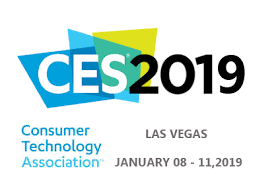Fresh off my second year of handling media relations for CES, one of the world’s largest trade shows, reinforced two things: 1) media relations is not dead and 2) you’ve got to have news if you want media coverage.
Easier said than done. I’ve handled PR and media relations for dozens of trade shows, conferences, and events of varying sizes. Not every event is on the same level as CES —185,000 attendees, 7,000 media, and nearly 3 million net square feet of exhibit space — with no shortage of interesting and timely stories to report on. But regardless of the industry, every client wants the same thing: media coverage for their event. Yet is that even possible given the changing landscape of media relations?
While a lot has been said and written about how traditional media relations is dying, the number of new online outlets and other forums, like podcasts, have increased dramatically. And when you have news — real news — people scramble to cover it.
I witnessed that in spades at CES. The phones were ringing almost nonstop at times, and emails and texts were coming in fast and furious from reporters wanting to talk to someone about the latest tech products, trends, stats, and more.
So what are the keys to ensuring your trade show, conference, or event gets media coverage?
- You need news. This is non-negotiable. Think about what news is…it’s reporting on something new — a new product, new research, a new announcement, something that has not been previously reported that is likely to be of interest to either a lot of people, or to a specific, niche audience. While not all news warrants coverage in the Wall Street Journal, it might be of interest to an industry trade publication, podcast, or other niche outlet.
- You need credible spokespeople who are flexible. In the case of CES, due to the volume of media interest, we had a team of spokespeople who were on call to conduct interviews. Not all organizations have this ability — or need. However, who ever is designated to serve as your organization’s spokesperson must be able to accommodate reporters’ often-changing schedules and deadlines.
- You need to do the legwork. From knowing which outlets and reporters are likely to cover your news to when to begin advance pitching, you must do your homework. Reporters are busy, so you need to find a way to get their attention. It helps if you have pre-established relationships. But if you don’t and your news is big enough, don’t worry, reporters will find you. On the other hand, if you don’t have major news to announce, it just means you are going to have to work harder to try to get the media’s attention.
In the end, there is no surefire way to guarantee your event will receive media coverage. If you want guaranteed coverage, buy an ad in the publication you want to be featured in. But if you have news to announce, credible spokespeople who are readily available, and you do the advance legwork required, you can increase the odds of getting media coverage for your event.


